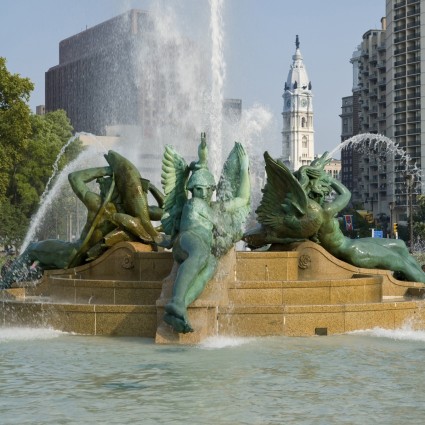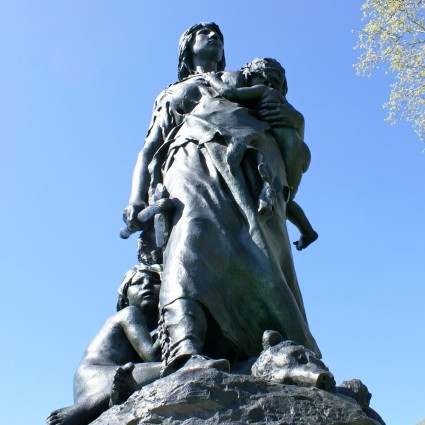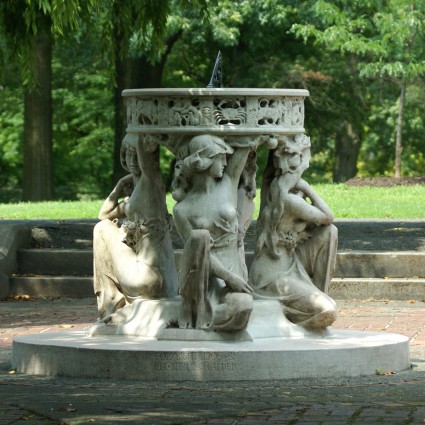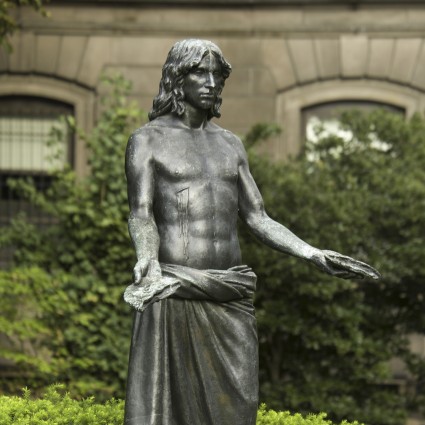At A Glance
Depicts biblical story from the Book of Genesis, in which Rebecca offers water to a man and his camel
Funds for the fountain were bequeathed by Mary Rebecca Darby Smith “to ornament the city that William Penn founded; to refresh the weary and thirsty … and to commemorate a fact of sacred history”
John J. Boyle was one of Philadelphia’s leading sculptors and created Stone Age in America on Kelly Drive
Please check the hours for the Horticulture Center grounds before your visit
Rebecca at the Well originally served as a water fountain. The bronze relief in the center depicts the biblical story from the Book of Genesis, in which Rebecca offers water to a man and his camel. It was Mary Rebecca Darby Smith (1814-1886) – the Philadelphia author and socialite who was the great great granddaughter of William Penn’s secretary, James Logan – who bequeathed $5,000 to the Philadelphia Fountain Society for the erection of a fountain that represented Rebecca at the well. In her will, she specified that the legacy was given “for a triple purpose: To ornament the city that William Penn founded; to refresh the weary and thirsty, both man and beast, and to commemorate a fact of sacred history.”
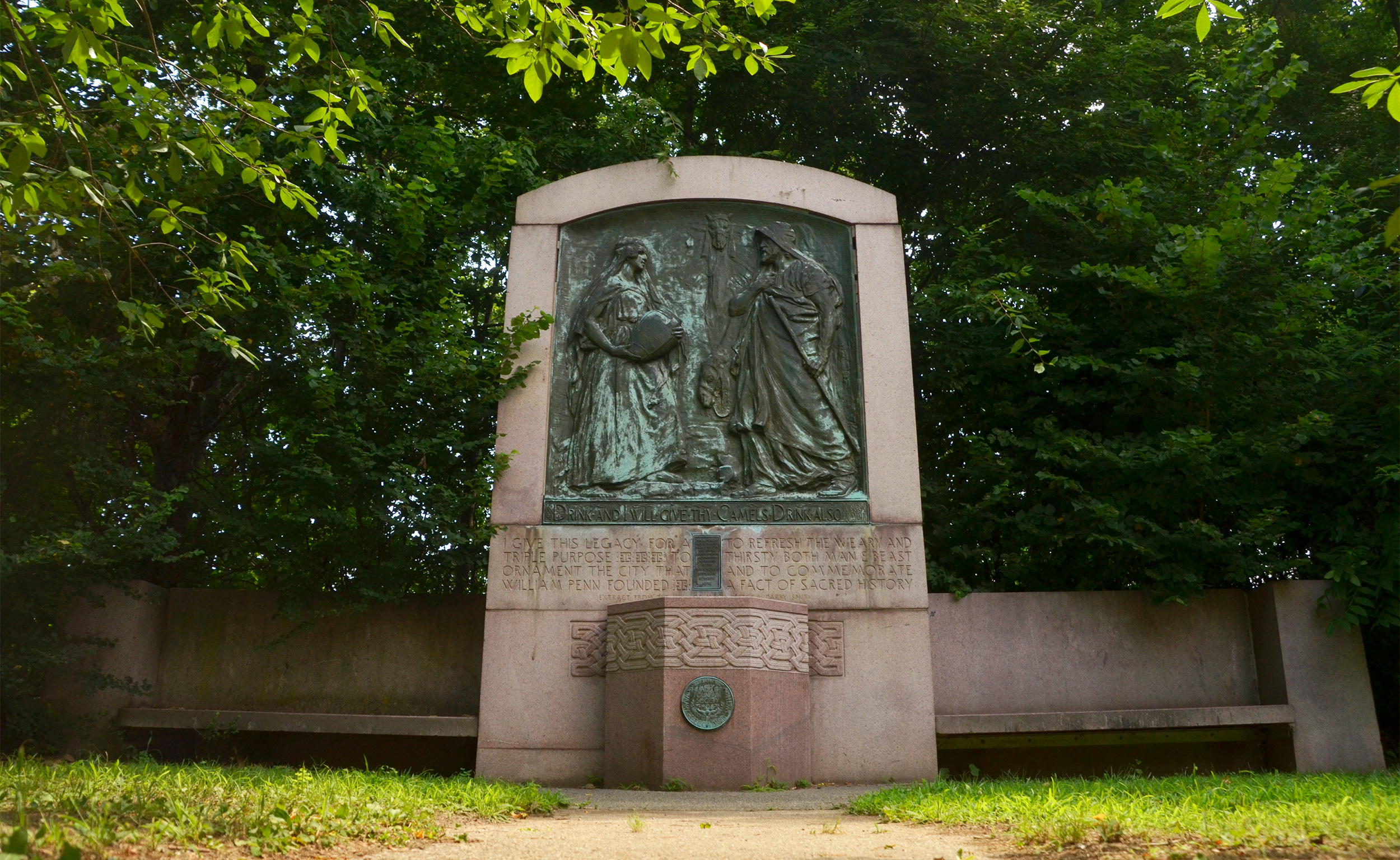
Completed in 1908, Rebecca at the Well was first installed on the median strip at 12th and Spring Garden Streets. It was removed in 1922, placed in storage, and relocated to the Fairmount Park Horticulture Center grounds in 1934.
One of Philadelphia’s leading sculptors, Boyle also created Stone Age in America on Kelly Drive, and Benjamin Franklin on the University of Pennsylvania’s campus. The granite elements of Rebecca and the Well were designed by architects Wilson Eyre, Jr., Walter Cope, and Edgar V. Seeler.
RESOURCES:
This artwork is part of the Around the Horticulture Center tour
